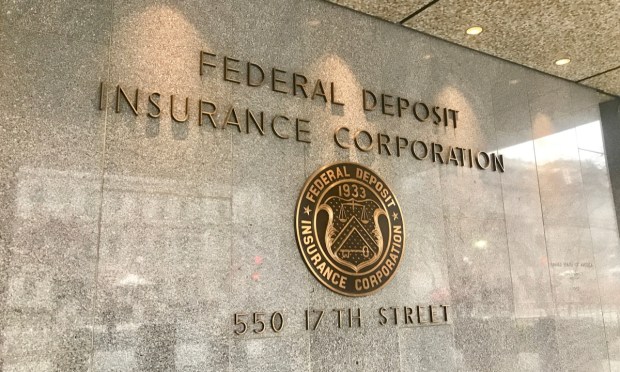CFPB Director Rohit Chopra Says FDIC Proposal Is ‘Somewhat Weird’

The Federal Deposit Insurance Corp. (FDIC) should review two aspects of its proposed rule to reduce the risk around large bank failures.
So said Rohit Chopra, director of the Consumer Financial Protection Bureau (CFPB) and member of the FDIC board of directors, in a Tuesday (Aug. 29) statement that was released before the board approved a notice of proposed rulemaking.
The proposed rule is open to public comment until Nov. 30 before being finalized.
Regarding the FDIC’s proposed debt requirement that would apply to banks with $100 billion or more in assets, Chopra said the threshold is “somewhat weird” because there are real-world examples in which banks under $100 billion posed meaningful threats of contagion to the banking system and had only limited options for resolution.
“Before finalizing, we should determine whether institutions below $100 billion, such as those with high levels of ‘uninsured’ deposits or those that have grown very rapidly, should also be subjected to a similar requirement,” Chopra said in the statement.
Chopra also addressed the FDIC’s proposal that banks that cross the $100 billion threshold in the future have a three-year transition period rather than a prompt effective date. Noting that such a transition period would have prevented a requirement of full compliance from Silicon Valley Bank, Chopra said “a lot can happen in three years.”
“I appreciate the need for there to be time for banks to plan for and execute new requirements after a rule is put into place, but as the Federal Reserve Board’s Silicon Valley Bank port-mortem highlighted, we need to rethink transition periods for banks that cross regulatory thresholds in the future after the rule has been in place for a while,” Chopra said.
The FDIC’s board of directors met Tuesday to discuss the Notice of Proposed Rulemaking jointly with the Board of Governors of the Federal Reserve System and the Office of the Comptroller of the Currency.
The new rules being proposed by the banking regulators are meant to ensure that banks’ long-term debt absorbs losses before the uninsured depositors and the FDIC take losses, which lowers the incentive for uninsured depositors to run.

